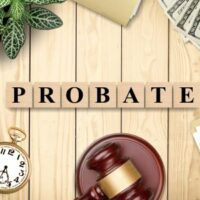How to Close a Florida Probate Estate

As a personal representative tasked with administering a Florida estate, you’ve already been on quite the journey – gathering assets, paying creditors, and handling the myriad duties that come along with estate administration.
Now, you’ve arrived at the final stage of your journey: officially closing out the probate estate. This last phase of estate administration is crucial. Taking the right steps at this juncture will help to protect you from any lingering liability, and finally put the probate of the estate behind you.
Doing everything right and digging into what exactly is required of you starts by ensuring that you comply with Florida’s probate laws and settle the probate estate completely, accurately, and timely. If you fail to appropriately close the estate, you might face potential claims from creditors – or even beneficiaries – years down the line.
This article aims to help you understand your next steps moving forward. For official advice and legal assistance in your own case, contact the experienced wills & probate attorneys at Suncoast Civil Law.
Steps to closing the Probate Estate
The steps to closing out a Florida probate estate are, generally, as follows:
- File the Petition for Discharge
Florida Probate Rule 5.400 lays out that the petition for discharge acts as the estate executor’s formal statement to the court that you have fully administered the estate and are seeking discharge.
This petition will contain some key statements relating to the administration of the estate, such as certifying statements that you have:
- Paid off the necessary creditor claims
- Made provisions for taxes and administrative expenses
- Detail charges to the estate for professionals hired in taking the estate through probate, such as accountants, attorneys, etc.
- Propose a comprehensive plan for distribution of remaining assets to rightful beneficiaries.
- Final accounting: include an itemized report of all estate money and property. The statements should be backed up by documentation (such as receipts, etc.)
The petition will be served to all interested parties, who have 30 days to file any objections to the discharge.
Step 2: Distributing Remaining Estate Assets
The estate executor’s filed petition for discharge must outline the proposed plan for distributing estate assets to the rightful beneficiaries. This will include a schedule of distribution, an inventory of the assets still in your possession, and your detailed plan of precisely how those final transfers will be made. You’ll be making those final transfers.
While beneficiaries may waive their right to receive this formal accounting, be cautious. The beneficiary waiver does not release the executor from full liability until the probate estate is discharged by the court.
Step 3: Receiving the Order of Discharge
Assuming no major objections, the court will observe the 30 day window for any objections to be made before entering an official order discharging the personal representative. This closes the estate, and final distribution of assets may be made.
Duties After Discharge
While discharge releases personal representatives from most duties, you must still follow through on the distribution plan, settle any leftover estate expenses, and close out any open estate accounts.
Consult Suncoast Civil Law
Often, even the best-intentioned estate executors make mistakes in taking an estate through probate. After all – you simply don’t know what you do not know. The Sarasota will & probate attorneys at Suncoast Civil Law can help. Whether you are looking to build your own estate plan or settle an estate entering probate – our experienced team can help. Contact our office today to begin working with our team
Sources:
media.floridabar.org/uploads/2024/12/Probate-Rules-01-01-25.pdf
fox13news.com/news/florida-man-accused-fraud-after-estate-sales-police-searching-more-possible-victims
